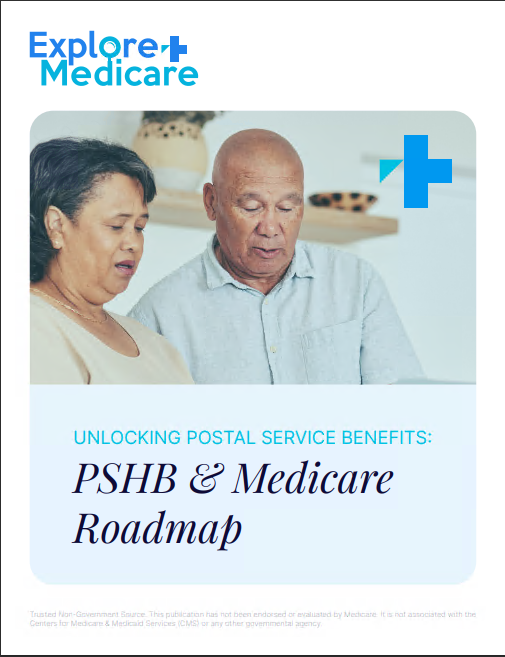Key Takeaways
-
Medicare in 2025 introduces significant changes, including a new $2,000 annual cap on prescription drug costs.
-
Regularly reviewing your Medicare coverage options each year ensures you benefit fully from updated plans and avoid unnecessary expenses.
The New Era of Medicare in 2025
As you step further into 2025, Medicare Advantage, Part D prescription plans, and Original Medicare are experiencing significant changes. Whether you’re currently enrolled or planning your retirement, understanding these updates is essential to avoid surprises and make sure your healthcare coverage meets your needs. Let’s dive into what you need to know.
Understanding the Big Changes for 2025
In 2025, several important Medicare updates could affect how you approach your healthcare planning. You might have heard bits and pieces about the upcoming shifts, but here’s the clear breakdown you need:
Prescription Drug Costs Get Easier to Manage
The biggest update for 2025 is the introduction of a $2,000 cap on your out-of-pocket prescription drug expenses under Medicare Part D. Previously, beneficiaries faced potentially unlimited drug expenses after hitting certain spending thresholds. Now, once you spend $2,000 out-of-pocket in a calendar year, your Part D plan covers all additional costs for your medications.
Additionally, you have the option to spread out-of-pocket prescription expenses across the year through monthly installments. This helps you better manage budgeting and avoid sudden large expenses at the pharmacy.
Medicare Advantage: More Choices, More Benefits
Medicare Advantage (Part C) continues to be popular, and many of these plans are adding new benefits or expanding existing ones. However, you’ll also see changes in the number and type of plans offered in your area. While the total number of available plans slightly decreases, specialized options, known as Special Needs Plans (SNPs), are becoming more available, especially tailored for specific health conditions.
Despite fewer plans, most enrollees find their Medicare Advantage premiums remain stable or even decrease slightly compared to last year. It’s critical that you review your Annual Notice of Change (ANOC), which you’ll receive each September. This letter outlines changes to your plan’s premiums, copayments, deductibles, and covered services.
Changes to Premiums and Deductibles: What You Should Know
In 2025, premiums and deductibles for Medicare Parts A and B are increasing slightly, so budgeting for these adjustments is essential:
-
Medicare Part A: The hospital deductible increases to $1,676 per benefit period. If you haven’t earned enough Social Security credits, you’ll face monthly premiums of $284 or $518, depending on your employment history.
-
Medicare Part B: The monthly premium rises to $185, and the annual deductible increases to $257. This premium applies to most beneficiaries, though those with higher incomes will pay more due to IRMAA adjustments.
Plan these costs into your retirement budget to avoid unexpected financial stress.
Prescription Payment Plan: Spreading Costs More Evenly
Another positive update is the Medicare Prescription Payment Plan, available from January 1, 2025. This optional program lets you spread your prescription out-of-pocket expenses evenly over 12 monthly payments, avoiding financial shocks from large, unexpected medication costs. This monthly payment option provides predictability and makes budgeting simpler throughout the year.
Medicare Advantage: Supplemental Benefits and New Notifications
Medicare Advantage plans continue to offer supplemental benefits, but their availability varies by plan and region. Common benefits such as vision, hearing, dental, over-the-counter allowances, and transportation may differ or become less prevalent compared to previous years. Approximately 73% of plans in 2025 offer over-the-counter benefits, down from 85% previously.
To help you better use available benefits, starting between June 30 and July 31, 2025, you’ll receive a personalized Mid-Year Enrollee Notification detailing unused supplemental benefits. This notification aims to remind you to utilize benefits you might have overlooked during the first half of the year.
Medicare Advantage (Part C) Plans: Costs and Considerations
Medicare Advantage plans continue to offer comprehensive coverage, often including prescription drugs, dental, vision, and hearing services. In 2025, premiums for most Medicare Advantage enrollees either remain stable or decrease slightly compared to previous years. However, it’s important to note that out-of-pocket maximums for these plans can still reach $9,350 for in-network services, and combined out-of-network expenses can go as high as $14,000.
Carefully reviewing the Annual Notice of Change from your plan provider, usually sent by September each year, helps you stay informed about any cost adjustments or coverage modifications.
Medicare and Your Healthcare Providers
Another crucial aspect to consider is your network of healthcare providers. Medicare Advantage plans use provider networks, which may change annually. Always verify during the Medicare Open Enrollment Period (October 15 to December 7) that your preferred healthcare providers remain in your plan’s network to avoid disruptions in your healthcare services.
Eliminating the “Donut Hole”: What Does It Mean for You?
A key relief in 2025 is the permanent elimination of the Medicare Part D “donut hole,” which previously resulted in higher prescription drug costs for many beneficiaries after reaching a certain spending level. This closure means continuous, stable coverage throughout the year, helping you manage your medication expenses without worrying about sudden increases in out-of-pocket costs mid-year.
Mid-Year Notifications for Unused Benefits
In 2025, Medicare Advantage plans will send you a personalized notification between June 30 and July 31 if you haven’t used certain supplemental benefits. This notification helps remind you about available benefits you might be overlooking, such as dental checkups, eyewear allowances, or fitness memberships. It’s a great way to ensure you’re maximizing the value of your Medicare Advantage plan.
Planning for Enrollment: Key Timelines
Understanding enrollment periods is essential:
-
Initial Enrollment Period (IEP): A seven-month window surrounding your 65th birthday, starting three months before and extending three months after your birth month.
-
Annual Enrollment Period (AEP): October 15 to December 7, when you can make significant changes to your Medicare coverage for the coming year.
-
Medicare Advantage Open Enrollment Period (MA OEP): From January 1 to March 31, current Medicare Advantage members can switch plans or return to Original Medicare.
-
Special Enrollment Period (SEP): Triggered by specific events like relocation or loss of current coverage, allowing enrollment changes outside standard periods.
Mark these dates to ensure your coverage aligns with your current needs.
Avoiding Common Pitfalls
When reviewing Medicare options, always:
-
Check Coverage Annually: Plans and coverage details can change each year. Review your Annual Notice of Change (ANOC) carefully.
-
Confirm Provider Networks: Regularly check your healthcare provider’s participation in your selected plan’s network.
-
Understand Costs Clearly: Know exactly what premiums, deductibles, copayments, and coinsurance you’ll be responsible for.
Taking these proactive steps prevents costly oversights.
Navigating Medicare with Confidence
Changes to Medicare can feel overwhelming, but staying informed and proactive is your best defense. With the new improvements and cost structures in 2025, Medicare continues to evolve to better meet your healthcare needs. Take advantage of the available tools, plan reviews, and professional guidance to keep your coverage in line with your personal healthcare and financial goals.
Ready to Take the Next Step?
Medicare decisions don’t need to be complicated or stressful. Reach out today to a licensed agent listed on this website for personalized, professional guidance tailored to your unique healthcare needs.









